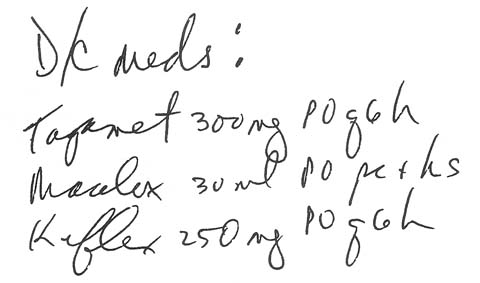
| Contents | Previous | Next |
A patient with gastrointestinal bleeding had been hospitalized for over a week. On day 11, the patient's doctor reviewed his chart and decided he could be discharged the next day. In preparation for discharge, the doctor charted:
|
|
A nurse interpreted this order as "discontinue the medications listed," and did so immediately.
The nurse discovered an error the next day when the doctor came to the unit and handed her three prescriptions, explaining they were for the patient's discharge medications. Confused, the nurse said, "I thought you discontinued all his meds." Pulling the doctor's order from the chart, she pointed to "D/C meds." The doctor explained that he used "D/C" in this order to mean "discharge. "
This error illustrates how a little abbreviation can create a big problem. Usually, accompanying information will make the correct meaning obvious when an abbreviation has more than one meaning. Usually ... but not always. To prevent such errors, be wary of any order in which "D/C" or other ambiguous abbreviations are used. And encourage doctors to double-check each order they write to make sure its meaning is clear.